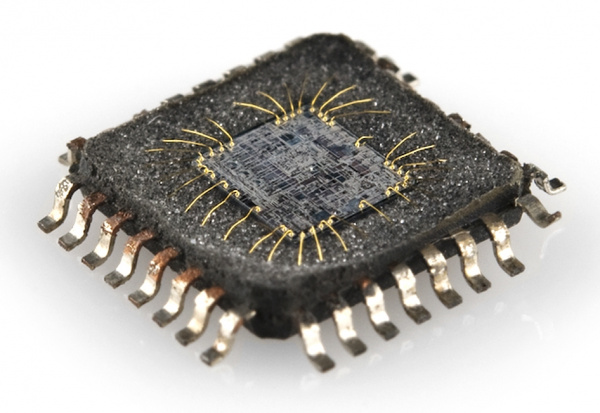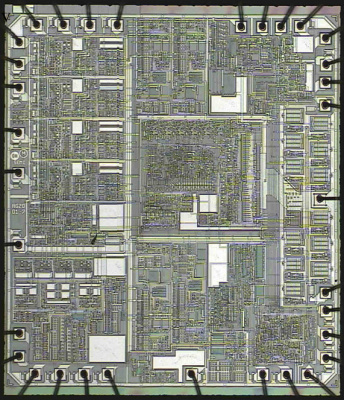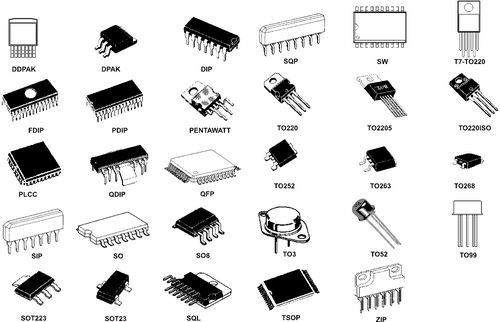Integrated circuits (ICs) are a keystone of modern electronics. They are the heart and brains of most circuits. They are the ubiquitous little black "chips" you find on just about every circuit board. Unless you're some kind of crazy, analog electronics wizard, you're likely to have at least one IC in every electronics project you build, so it's important to understand them, inside and out.
Inside the IC
When we think integrated circuits, little black chips are what come to mind. But what's inside that black box? 
The real "meat" to an IC is a complex layering of semiconductor wafers, copper, and other materials, which interconnect to form transistors, resistors or other components in a circuit. The cut and formed combination of these wafers is called a die.
While the IC itself is tiny, the wafers of semiconductor and layers of copper it consists of are incredibly thin. The connections between the layers are very intricate. Here's a zoomed in section of the die above:
An IC die is the circuit in its smallest possible form, too small to solder or connect to. To make our job of connecting to the IC easier, we package the die. The IC package turns the delicate, tiny die, into the black chip we're all familiar with.
IC Packages
The package is what encapsulates the integrated circuit die and splays it out into a device we can more easily connect to. Each outer connection on the die is connected via a tiny piece of gold wire to a pad or pin on the package. Pins are the silver, extruding terminals on an IC, which go on to connect to other parts of a circuit. These are of utmost importance to us, because they're what will go on to connect to the rest of the components and wires in a circuit.
There are many different types of packages, each of which has unique dimensions, mounting-types, and/or pin-counts.



